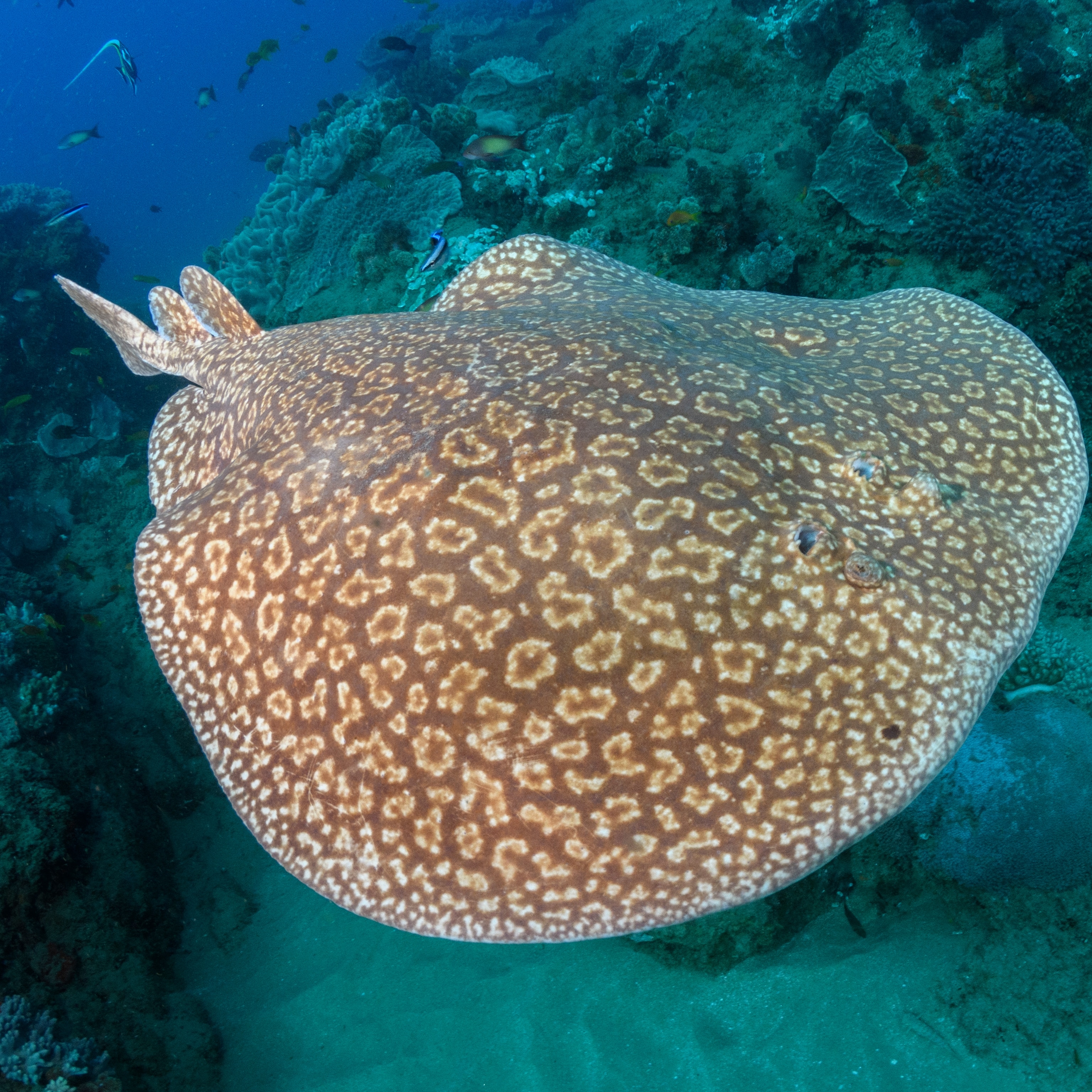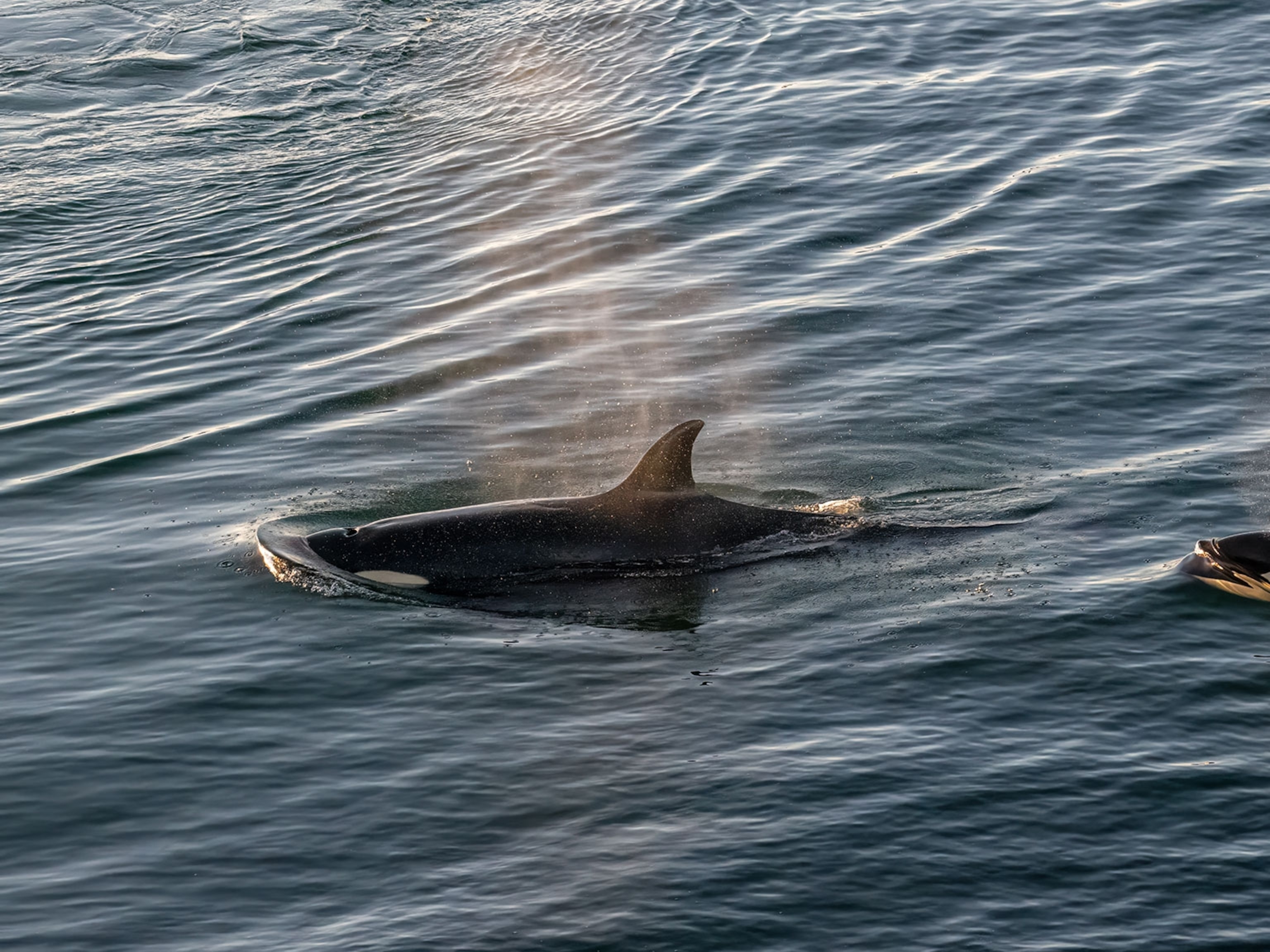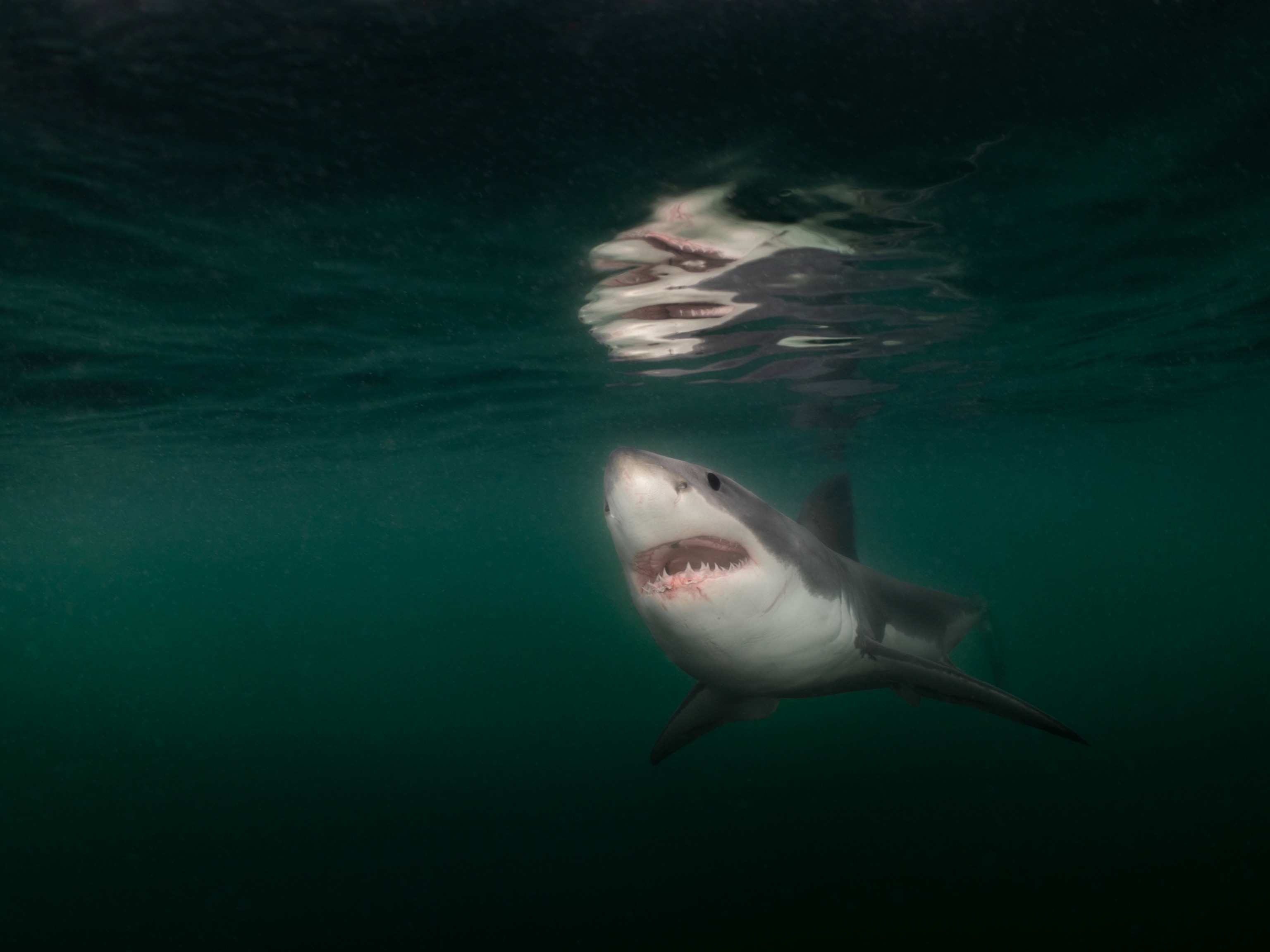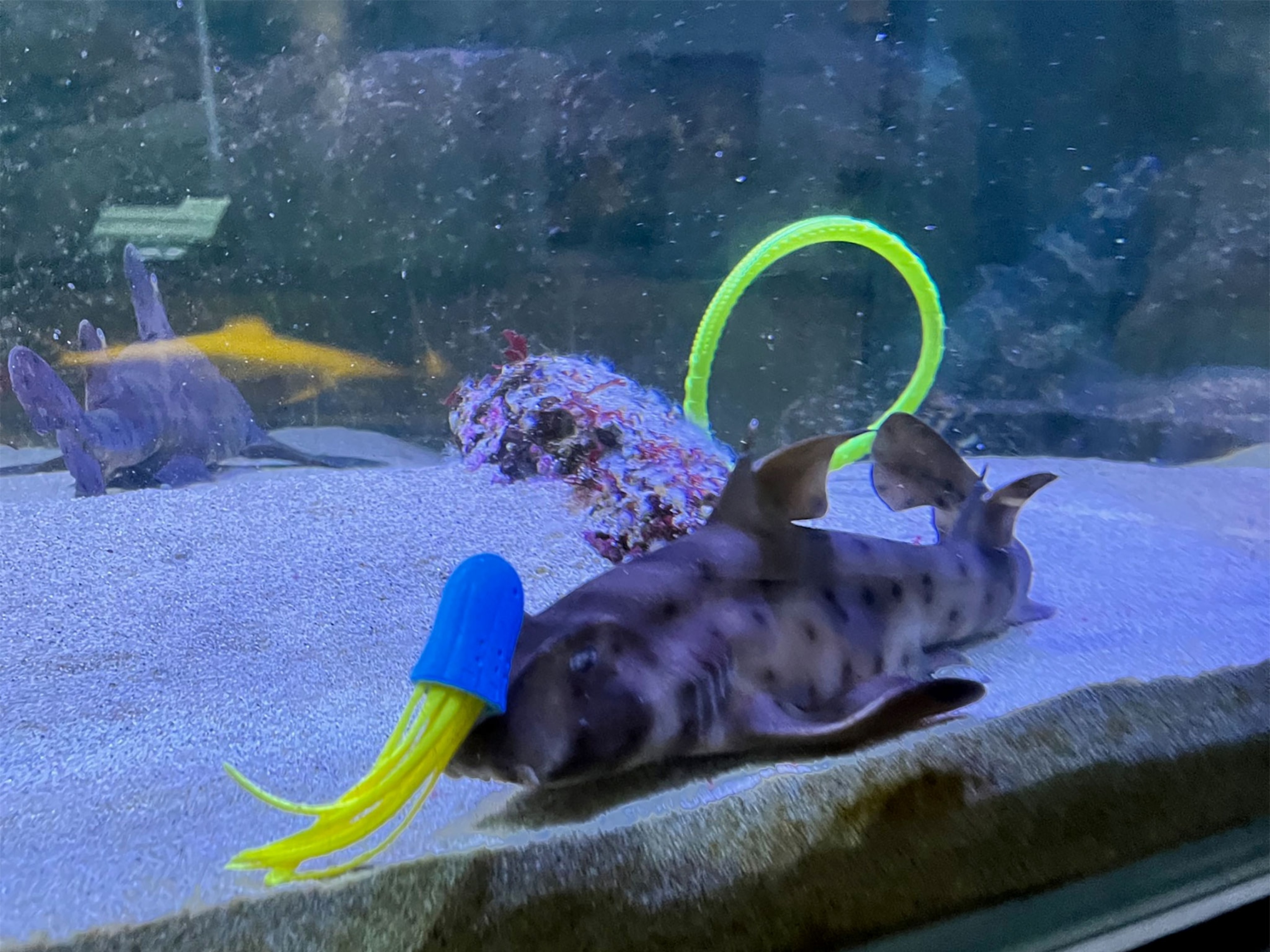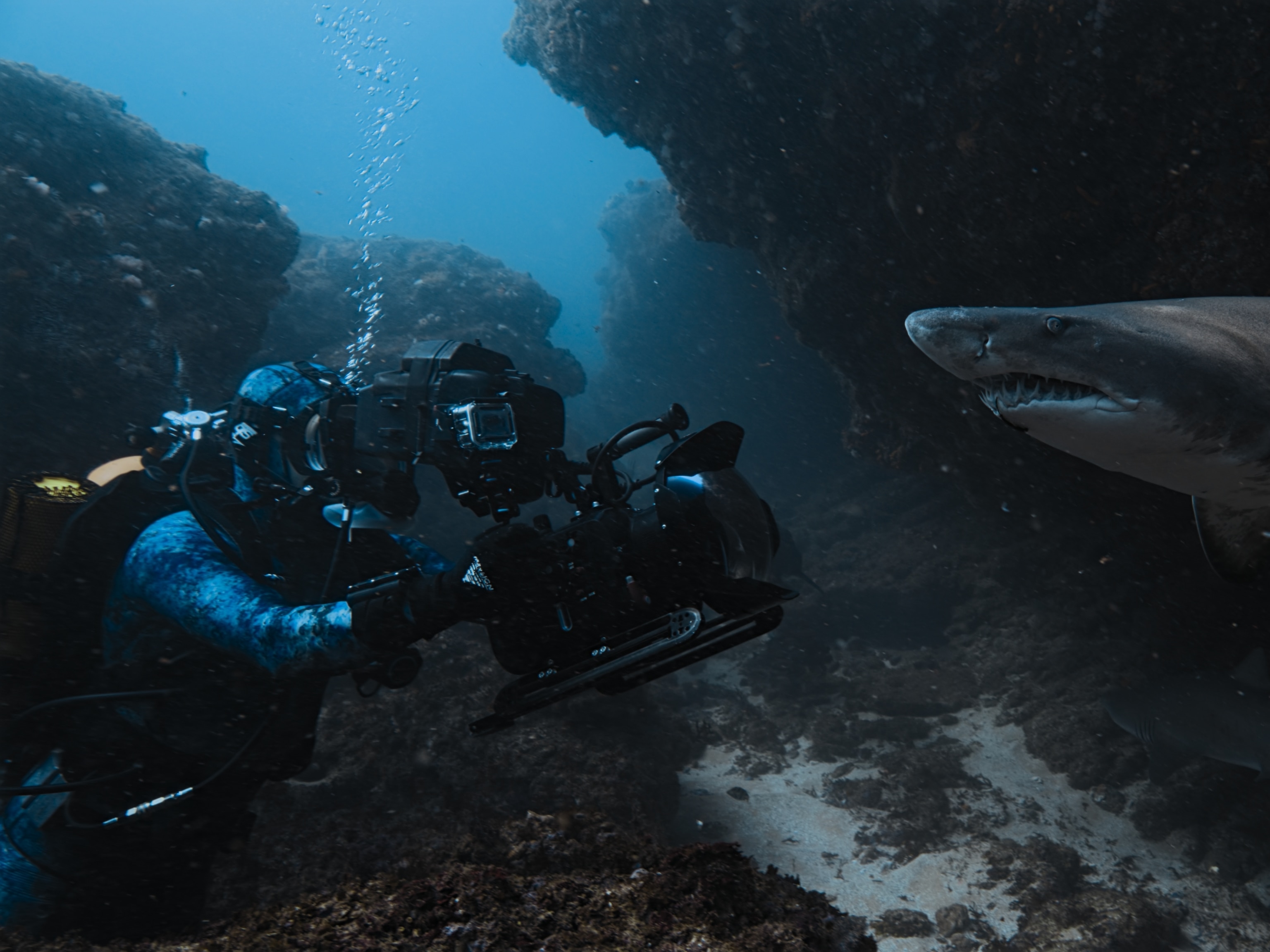
Scientists Track a Great White Shark Across the Atlantic for the First Time
Tagged off Florida, the mature female is now closing in on the U.K.'s Cornish coast.
Ever since researchers tagged a great white shark nicknamed Lydia off Jacksonville, Florida, in March 2013, they've been keeping a close eye on her. Their vigilance was rewarded this past weekend when the 14-foot (4.4-meter) fish became the first great white observed to cross the Atlantic Ocean.
Researchers had suspected great whites could make such a journey, but none had previously been documented doing so, says Heidi Dewar, a fisheries research biologist with the U.S. National Marine Fisheries Service in La Jolla, California.
Although great white sharks aren't the only aquatic species to make such long-distance trips, this discovery is changing the way researchers think about the iconic animals, from the ways in which their populations interact to potential conservation strategies.
Lydia is now just east of the Mid-Atlantic Ridge—an underwater mountain chain that threads north and south through the ocean—and is headed toward the U.K.'s Cornish coast. Researchers consider crossing the ridge to be the official point at which one passes into the eastern Atlantic.
The shark now also holds the distinction of traveling the farthest of any known great white. So far, Lydia has swum about 20,000 miles (32,187 kilometers), including meanderings along the U.S. East Coast before she struck out for Europe. Ocearch, the organization that developed the method used to capture and tag the great white, displays a real-time track of the shark on its home page.
This champion swimmer blew past the previous record holder, a female that swam from South Africa to western Australia and back—crossing the Indian Ocean both ways—for a total of 12,427 miles (20,000 kilometers) in 2004.
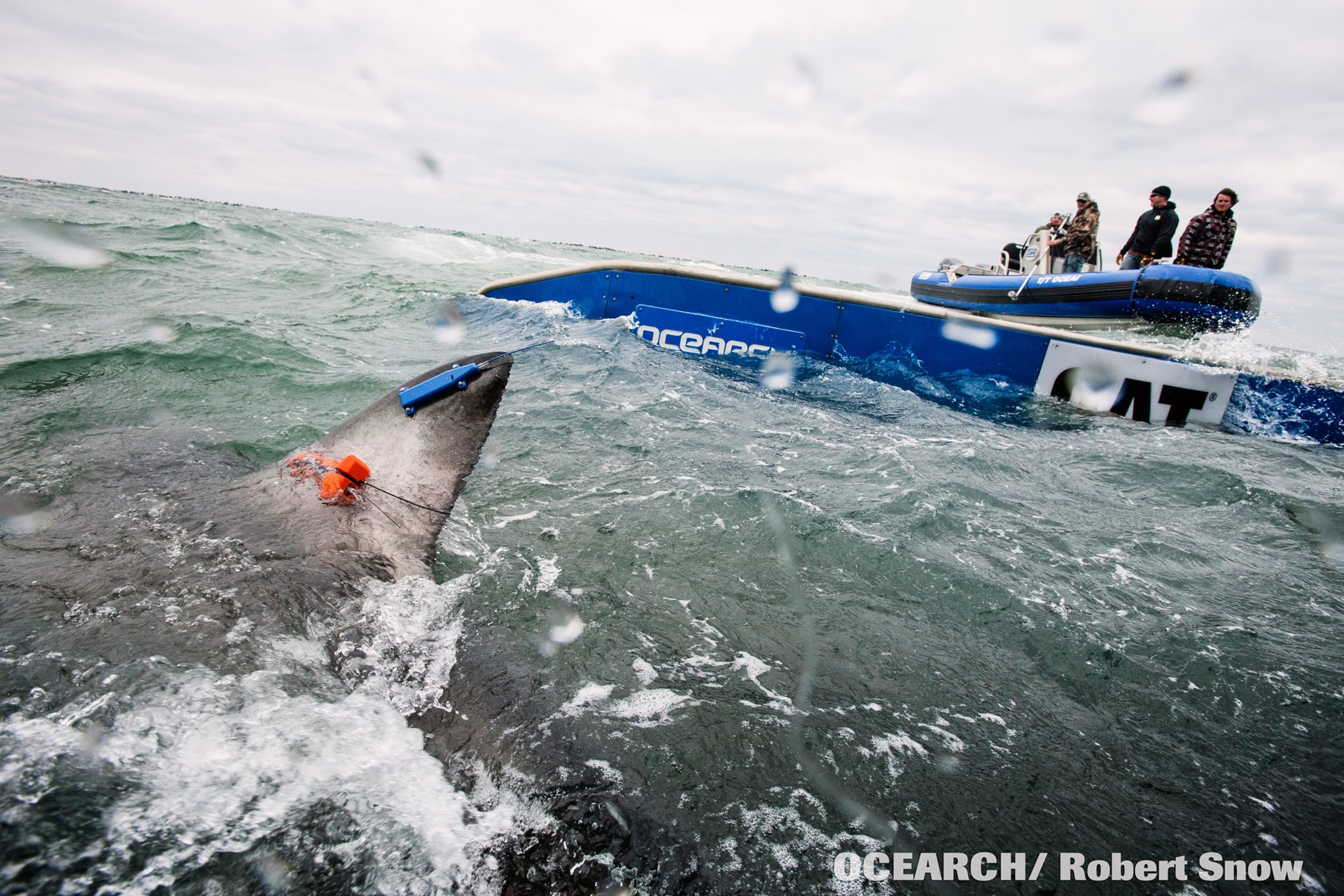
"We're really just starting out in the world of white sharks," says Greg Skomal, the senior fisheries scientist at Massachusetts Marine Fisheries who tagged Lydia. Tracking such huge predators wasn't feasible until recent advances in technology.
Lydia's satellite tag transmits location data every time the unit, attached to her dorsal fin, rises above the ocean's surface. Previous tags, known as archival tags, stored all their information until researchers could retrieve the unit, download the data, and re-create the shark's track. (See "Shark Tagging & Tracking: Separating Fact From Fiction.")
One Big Family?
Scientists have traditionally considered great white populations in the Mediterranean and off the U.S. East Coast to be distinct. But they have also occasionally seen great whites off the coasts of Europe and the Azores (map), west of Portugal, says Skomal. Looking at data from sharks like Lydia, he says, "you start to think, this may all be one big population."
"Indeed, that's what's panned out when they've looked at [transoceanic movement] in other species," he adds. There seems to be a single North Atlantic population of blue sharks, for example. "I think the same can be argued for the mako." (See "Record-Breaking Mako Shark Tips Off Conservation Debate.")
It could very well be that other great white sharks journey across the Atlantic, Skomal says. Lydia just happens to be the first one researchers observed making the trip.

Follow the Food
Why did Lydia decide to head to Europe? Likely for the banquet at various stops along the way.
On March 7, tracking data showed her swimming north along the Mid-Atlantic Ridge. "She's not diving down to the ridge," Skomal says. She's just swimming above it like an animal walking along a fence.
Lydia knows the feature's there, Skomal says, likely picking up on magnetic anomalies. But the area is also rich in feeding opportunities, which is probably why she spent time wandering above the underwater peaks.
In the Pacific Ocean the long-distance movements of great whites are usually tied to food, says Peter Klimley, a great white shark expert at the University of California, Davis. Seal and sea lion colonies on the Farallon Islands, near San Francisco, and on Guadalupe Island, off Baja California, attract great whites from September through November. (See a video of a great white shark going after seals.)
The sharks then swim out to the middle of the Pacific. Researchers are still trying to figure out what they do there, but the sharks then come back to the same coastal marine mammal colonies, Klimley explains.
Return Appearance
As to whether the U.S. East Coast will ever see Lydia again, Dewar thinks there's a good chance she'll return. "That seems to be the typical pattern for females," she says. They'll give birth, then they "go off and forage, and travel pretty wide distances for two years or so, and then they come back."
But, Dewar cautions, "we don't have that many tags on large females, so there's always the potential to be surprised.
"I think it's really exciting that they're starting to get these kinds of tags out there so we can get this information," she says. "The large females are a really important part of the population, and until you know what's going on, it's hard to develop conservation strategies to protect them."
Follow Jane J. Lee on Twitter.


